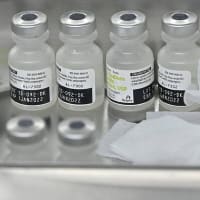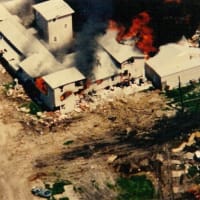Pulsed Water-splitters No.7(パルスを用いた水の分解)
これからの転載は、GhostRiponさん(HN)の力作、傑作、
それではまだ言い足りない........。
勝れた業績である!!
詳しく読めば、誰でも水で走る車、水で起こす電気、水を利用して、
エネルギー革命が出来る!!
燃料となる水素混合ガスを発生させることも大事であるが、そのガスを用いて、内燃機関を動作させる様々の要点にについて、記されている。詳しくは、転載記事を目を通していたく以外は、付け加えることもない。
様々な制御方法も記述されているので、今にも完成しそうだ。勿論、実際の問題も発生するだろうが、問題をクリアーする方法は、さらに工夫されて良い方法も見つかるだろう。現代はエレクトロニクス制御の時代であるので、取り分け、日本人には得意中の応用分野となろう。
とにかく、基本的考え方に置いて、言い尽くされていると考える。
Pulsed Water-splitters No.7(パルスを用いた水の分解)
テーマ:エコ&エネルギー
A Practical Guide to Free-Energy Devices
Author: Patrick J. Kelly
Chapter 10: Automotive Systems No.7
http://www.free-energy-info.co.uk/Chapt10.html
The Reason for Changing the Timing
タイミングを変える理由
The
fuels used with most internal combustion engines are either petrol
(gasoline) or diesel. If you are not interested in chemistry, then you
are probably not aware of the structure of these fuels. These fuels are
called "hydrocarbons" because they are composed of hydrogen and carbon.
Carbon has four bonds and so a carbon atom can link to four other atoms
to form a molecule. Petrol is a long chain molecule with anything from
seven to nine carbon atoms in a chain:
ほとんどの内
燃機関で使われた燃料は、〈英〉ガソリンまたはディーゼルです。 もし化学に興味がないならば、たぶん、これらの燃料の構造に気づいていません。
それらが水素と炭素により構成されているので、これらの燃料は「炭化水素」と呼ばれます。
炭素は4本の共有結合をとることができ、従って、分子を形成するために、炭素原子が4つの他の原子とリンクできます。
ガソリンは、炭素原子を7から9持つ、長連鎖炭化水素です:
Diesel
has the same structure but with eleven to eighteen carbon atoms in a
chain. In a petrol engine, a fine spray of petrol is fed into each
cylinder during the intake stroke. Ideally, the fuel should be in
vapour form but this is not popular with the oil companies because
doing that can give vehicle performances in the 100 to 300 mpg range
and that would cut the profits from oil sales.
ディー
ゼルは、同じ構造で炭素原子を11から18まで持つ、長連鎖炭化水素です。
ガソリンエンジンにおいては、吸気行程中にガソリンは微細な噴霧をされ、各シリンダーに供給されます。
燃料は蒸気の状態にあるのが理想的なはずですが、100から300マイル/ガロン(1ガロン[US:3.8L]あたりの走行距離)の燃費範囲で車両を走ら
せることができてしまうと、石油販売から利益を奪う結果になるでしょうから、これは、石油会社にとってよろしくありません。
The
petrol in the cylinder is compressed during the compression stroke and
that reduces its volume and raises its temperature substantially. The
air/fuel mix is then hit with a powerful spark and that provides enough
energy to start a chemical reaction between the fuel and the air.
Because the hydrocarbon chain is such a large molecule, it takes a
moment for that chain to break up before the individual atoms combine
with the oxygen in the air. The main engine power is produced by the
hydrogen atoms combining with oxygen, as that reaction produces a large
amount of heat. The carbon atoms are not particularly helpful, forming
carbon deposits inside the engine, not to mention some carbon monoxide
(CO) and some carbon dioxide (CO2) as well.
シリン
ダのガソリンは圧縮行程の間に圧縮され、体積を減らされ、その温度を大幅に上昇させます。
空気/燃料混合物は、その時、強力なスパーク(火花)に打たれて、燃料と空気の化学反応(燃焼・酸化)を起こすために、十分なエネルギーを提供します。
長連鎖炭化水素は巨大分子であるので、個々の原子が空気中の酸素と化合するには、その鎖が壊れる必要がありますが、それには時間が掛かります。(反応速
度・燃焼速度) 主要なエンジンパワーは、酸素と結合する水素原子の反応(大量の熱を引き起こす)により引き起こされます。
炭素原子は特に役立っていません、エンジンの内部にカーボン堆積物を形成する、あるいは、一酸化炭素(CO)になる、そしていくらかの二酸化炭素
(CO2)になるのは言うまでもありません。
The key factor here is the slight
delay between the spark and the combustion of the fuel. The combustion
needs to happen a few degrees after Top Dead Centre when the piston is
about to start its downward movement in the power stroke. Because of
the delay caused by the hydrocarbon chain breaking down, the spark
occurs a few degrees before Top Dead Centre:
こ
このキーファクターは、燃料のスパークと燃焼の間のわずかな遅延です。
ピストンがまさにパワーストロークにおける降下を始めようとしているとき、燃焼はTop Dead Centre(上死点)の数度[後]
に起こる必要があります。 遅延は、長連鎖炭化水素の破壊が原因のため、スパークは、遅延を見越して上死点の数度[前] に発生させます(点火時期):
If
you were to replace the petrol vapour with hydroxy gas, then there
would be a major problem. This is because hydroxy gas has very small
molecule sizes which do not need any kind of breaking down and which
burn instantly with explosive force. The result would be an explosion
which occurs far too soon and which opposes the movement of the rising
piston as shown here:
もしガソリン蒸気を水素混合ガスと取り替えるな
ら、重大な問題があるでしょう。水素混合ガスは、鎖が壊れる必要がない非常に小さい分子サイズを持っているので、即時
、燃えます。結果は、すぐに燃焼が起こり、ここに示されるように上昇するピストンの動きに反対する爆発です:
The
forces imposed on the piston's connecting rod would be so high that it
would be quite liable to break and cause additional engine damage.
ピストンのコネクティングロッドにかかる力が非常に大きいでしょうから、それは、追加のエンジン損傷をまねく可能性が高くなるでしょう。
In
the case of our electrical generator, we will not be feeding it a mix
of air and hydroxy gas, but instead, a mix of air, hydroxy gas and cold
water fog. This delays the combustion of the hydroxy gas by a small
amount, but it is still important to have the spark occur after Top
Dead Centre, so the ignition of the generator needs to be retarded by
eleven degrees.
私たちの発電機では、空気と水素混合ガスのミックスを供給するので
はなく、代わりに水素混合ガスを冷水の霧で覆ったものと空気のミックスを供給します。
これは少量で水素混合ガスの燃焼を遅らせますが、スパーク(点火)を上死点の後に起こすことがまだ必要です。従って、発電機(のエンジン)の点火時期は、
Top Dead Centre(上死点)後の11度に遅らせられる必要があります。
Engine design
varies considerably in ways which are not obvious to a quick glance at
the engine. The timing of the valves is a big factor here. In the
smallest and cheapest engines, the engine design is simplified by not
having the spark timing taken off the cam-shaft. Instead, production
costs are cut by taking the spark timing off the output shaft. This
produces a spark on every revolution of the engine. But, if it is a
four-stroke engine, the spark should only occur on the power stroke
which is every second revolution of the output shaft. If the fuel is
petrol, then this does not matter as the extra spark will occur near
the end of the exhaust stroke when only burnt gasses are present in the
cylinder.
エンジンの設計はかなりの方法で異なり、エンジンをチラッと見ただけでは、明ら
かになりません。 バルブのタイミングは、その大きな要素です。
最も小さくて最も安いエンジンでは、エンジン設計は、カムシャフトからスパークタイミングを取らないことによって、簡素化されます。
代わりに、出力軸からスパークタイミングを取ることによって、生産コストが削減されます。
これはエンジンのすべての回転においてスパークを生み出します。
しかし、もしそれが4サイクルエンジンであるならば、スパークは本来、出力軸の2回転に1回起こるパワーストローク時に必要なだけです。
もし燃料がガソリンであるならば、シリンダで、燃やされたガスが存在する排気行程の終わり近くで(余計な)スパークが起こるだけなので、これはさほど重要
ではありません。
Some people are concerned when they think of
hydroxy gas burning and producing water inside the engine. They think
of hydrogen embrittlement and rusting. However, because of the nature
of the hydrocarbon fuel already being used, the engine runs primarily
on hydrogen anyway and it always has produced water. The water is in
the form of very hot vapour or steam and the engine heat dries it out
when the engine is stopped. Hydrogen embrittlement does not occur as a
result of using a hydroxy gas booster.
人々の中には、彼
らが水素混合ガス燃焼とエンジンの中に水を作り出すことを懸念している人もいます。 彼らは水素脆化と錆びを考えます。
しかし、すでに使用される炭化水素燃料の性質のため、エンジンは主として水素で走ります、そして、常に水を生産しています。
水は、非常に熱い蒸気か蒸気の形であります、そして、エンジンが止められたとき、エンジンの熱で、蒸気を乾燥させます。
水素脆化は、水素混合ガスブースターを使うことの結果として起こりません。
Anyway, if we were to
delay the spark until after Top Dead Centre as we must, then the
situation is quite different as the waste spark will also be delayed by
the same amount. With most engines, at this point in time the exhaust
valve will have closed and the intake valve opened. Our very flammable
gas mix will be being fed into the engine on it's intake stroke. This
means that our gas supply system is openly connected to the cylinder
through the open intake valve, and so, the waste spark would ignite our
gas supply system (as far as the bubbler which would smother the
flashback). The situation is shown here:
とにか
く、私たちが遅らせなければならないように、Top Dead
Centre(上死点)の後までスパークを遅らせるつもりなら、また、同じ量で無駄なスパークが延期されるので、状況はまったく違います。
ほとんどのエンジンでは、排気バルブは閉じたが、吸気バルブが開き始めているタイミングでスパークすることになる。
非常に可燃性の高い水素混合ガスをエンジンへ供給しているのが、吸気ストローク(吸気行程)である。
これは、ガス供給システムが、開いている吸気バルブを通してシリンダと接続されるのを意味し、従って、無駄なスパークによって、ガス供給システムは発火
(バックファイア)します。(逆火を抑えるbubbler) 状況はここに示されます:
this
leaves us with two engine adjustments: timing delay and waste spark
elimination. There are various ways in which these can be done and as
each engine design is different, it is difficult to cover every
possibility. However, there is a technique which can be used with many
engines and which deals with both issues at the same time.
こ
れは2つのエンジン調整によって取り除きます:
タイミングの遅延および無駄なスパーク除去。これらをできる様々な方法があります、そして、それぞれのエンジン設計が異なっているように、あらゆる可能性
をカバーするのは難しいです。 しかしながら、多くのエンジンに使用できて、同時に両方の問題に対処するテクニックがあります。
Most engines of this type are four-stroke engines with intake and exhaust valves, perhaps something like this:
インテークと排気バルブのある、ほとんどの4サイクルエンジンは、おそらくこのような機構です:
The
intake valve (shown on the right in this illustration) is pushed down
by a cam shaft, compressing the spring and opening the inlet port. The
exact arrangement will be different from one engine design to the next.
What is fixed is the movement of the valve itself and that movement
only takes place every second revolution. There are various ways of
using those movement to eliminate the waste spark and retard the
timing. If a switch were mounted so that it opens when the intake valve
opens and closes when the intake valve closes, then the switch closure
shows when the piston starts upwards on its compression stroke and a
simple electronic circuit can then give an adjustable delay before
firing the coil which produces the spark. This, of course, involves
disconnecting the original electrical circuit so that no waste spark is
generated. The current flowing through the switch contacts can be
arranged to be so low that there will be no sparking at the contacts
when the circuit is broken again. The switch positioning might be like
this:
吸気バルブ(このイラストにおいて右側に示されます)は、カムシャフトにより押し下
げられ、スプリングを圧縮し、吸気ポートを開きます。 正確な配置は、エンジンデザインにより違います。
固定されるのは、バルブ自身の動きであり、その動きは2回転に1度起こるだけです。
が、これらの動きを使用して無駄なスパークを取り除き、タイミングを遅らせる様々な方法があります。
もし吸気バルブが開き→閉まる時に、接点が開くように、スイッチが設置されたならば、いつが
ピストン上昇の圧縮行程かわかり、2回転に1度起こる燃焼行程時のみに、簡単な電子回路で、調整し遅れた点火時期でスパークを引き起こす可能になります。
これは、もちろん、無駄なスパークが全然生成されないようにオリジナルの電気回路の接続を絶つことを伴っています。
回路が動いているとき、(誤作動で)接触しスパークしてはいけないので、スイッチの接点は、とても低くなるようにアレンジされてます。回路が動いていない
ときは、接触していてもスパークはしません。 スイッチポジショニングは、このようなものかもしれません:
An
alternative is to attach a strong permanent magnet to the rocker arm,
using epoxy resin, and then position a solid state "Hall-effect" sensor
so that it triggers the delay before the spark is generated.
代
替手段がエポキシ樹脂を使用して、強い永久磁石をロッカー・アームに取り付け、次に、ソリッドステートの「ホール効果」 [ホール効果 (Hall
effect)とは、電流の流れているものに対し、電流に垂直に磁場をかけると、電流と磁場の両方に直交する方向に起電力が現れる現象。主に半導体素子で
応用される] センサを置くことであるので、スパークが発生する前に、それは、遅れの引き金となります。
If the
engine did not have a waste spark, then in theory, the timing mechanism
of the engine could be used to retard the spark. However, in practice,
the timing mechanism is almost never capable of retarding the spark to
the position that is needed for running without fossil fuel, and so,
some kind of delay circuit will be needed anyway.
エ
ンジンに無駄なスパークがないなら、理論上、点火を遅らせるのにエンジンのタイミングメカニズムを使用できるでしょう。
しかしながら、実際には、タイミングメカニズムがほとんど化石燃料なしで走るのに必要である位置への点火を遅らせることが物理的にできないので、ある種の
遅延回路がとにかく必要でしょう。
The sort of delay circuit needed is called a "monostable" as it has only one stable state. A basic circuit of that type is:
必要な遅延回路の分類は「単安定」と呼ばれます。そのタイプの基本的な回路です:
If
you are not at all familiar with electronic circuits, then take a look
at the beginner's electronics tutorial as that explains how circuitry
works and how to build any simple circuit from scratch. We can use two
of these circuits, the first to give the adjustable delay and the
second to give a brief pulse to the ignition circuit to generate the
spark:
電子回路に全くなじみ深くないなら、それによって回路がどのように動作するか、そ
して、最初からどのように何か単純回路を造るかがわかるとき、初心者のエレクトロニクスチュートリアルを見てください。
私たちはこれらの2個の回路を使用します、1番目は、遅延を調整可能にする、2番目は、スパークを発生させるように簡潔なパルスをイグニション・サーキッ
トに与える:
Making the hydroxy gas
水素混合ガスを作る
When
the generator is running, we have a ready supply of electrical energy,
coming from a piece of equipment which has been specifically designed
to supply large quantities of electricity for any required application.
We are not dealing with the spare capacity of some low-grade alternator
in a car, but we have substantial electrical power available.
どんな用途にも大量の電気を供給するようにサイズ設計されている、ジェネレータが動いているとき、私たちには、電気エネルギーの供給があります。車に付いている低グレードの交流発電機の予備能力を使っていないが、私たちには、利用可能なかなりの電力があります。
Having
said that, the electrolysers described at the start of this document
are efficient and it is unlikely that an excessive amount of power
would be needed when using one of those designs. Another convenient
factor is that this is a stationary application, so the size and weight
of the electrolyser is not at all important, and this gives us further
flexibility in our choices of dimensions.
この文書の
開始の時に説明された電解槽は効率的で、それらの設計のうちの1つを使う時に、過度のパワーが必要になるとは思えない。
別の便利なファクターは、これが固定の用途であることです。従って、電解槽のサイズと重量は、重要ではありません。そして、これは私たちの寸法の選択にお
ける更なる柔軟性を私たちに与えます。
As this is an application where it is highly likely that the electrolyser will be operated for long periods unattended, an automated water supply system should be provided. The main details of such a system have alr




























そもそも水素をつくるのに化石燃料のエネルギーを使うんでしょう。
普通よく言われる水素の利用のメリットは燃料電池としてエネルギーを
電力に転換してそれなりのエネルギーの転換効率を得られることですが、
せっかく水素にしたものをただの内燃機関の燃料としてしまったんでは
意味がありません。水素を持ち運ぶのは金属に吸収させるなど手間が
いるため、ガソリンの方がまだましでしょう。
もっと勉強してください。
<返事>
season 様
コメント有り難うございます。
カテゴリー『水が燃える』を最初からお読み下さい。そうでないと議論になりません。以上です。飄平
素敵なブログ知ったので情報の拡散を。
荒田教授もリチャードコシミズ先生も
皆でなんとかしましょうね。飄平さま。
読んでみてください。
http://mademoiselleai.nifty.com/madeailog/2009/11/post-3f61.html
<返事>
希望 様
コメント有り難うございます。
ご紹介のブログ拝見しました。感動しました。的確です。全くそのように感じています。何を根拠にそういうことを書かれておられるのか分かりませんが、仰るとおりと驚きました。あっ、占者ですよね。それなら、納得です。
私は普通人ですから、情報を元に確信しているに過ぎませんが、ああいう方があのように仰られると、確信はさらに深まりました。かく言う私でも、勘で判断している部分は多いのですが......。
荒田先生の固体内核融合は、独立党に委ねて応援しています。私は独立党員ではありませんが、心情協賛者です。少ないながら、荒田カンパにも応じました。リチャードさんを心から応援し、時には、我を忘れて共闘しています。飄平